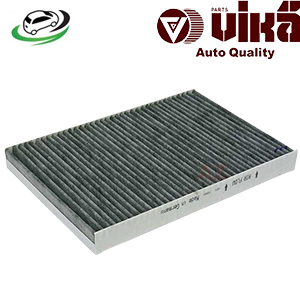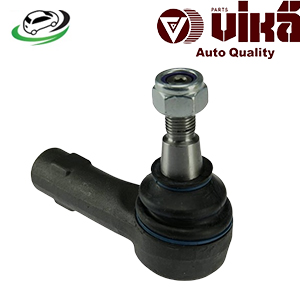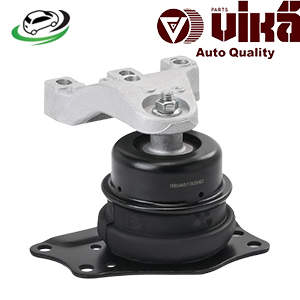-3%
Get Right Engine Mount for Vehicles with 1.2TSI 66kW77kW (CBZA CBZB) 1.4 16V engines 6R0199167AB
The right engine mount, an essential part of a vehicle’s engine mounting system, plays a crucial role in stabilizing the engine and reducing vibrations. Engine mounts are critical components of the powertrain, designed to hold the engine securely in place while isolating it from the vehicle’s chassis to prevent excessive vibrations from transferring into the cabin. While there are several mounts positioned around the engine, the right engine mount is one of the most significant, particularly in vehicles where the engine layout is longitudinal or transverse.
In this comprehensive guide, we will explore the function, benefits, materials, and types of right engine mounts, as well as their maintenance and replacement considerations.
Function of a Right Engine Mount
An engine mount, also known as a motor mount, is typically made from a combination of rubber and metal. It attaches the engine to the vehicle’s frame or subframe and absorbs vibrations generated by the engine’s operation. The right engine mount, located on the right side of the engine (usually in a front-engine, rear-wheel-drive vehicle), plays a crucial role in maintaining engine stability, especially under dynamic driving conditions like acceleration, braking, and turning.
Key functions of the right engine mount include:
- Stability and Support: The right engine mount ensures that the engine stays securely in place within the engine bay. Without a properly functioning engine mount, the engine could move excessively, potentially leading to damage to other components, including the drivetrain and exhaust system.
- Vibration Damping: The engine produces significant vibrations during operation due to the reciprocating motion of the pistons, combustion forces, and rotational movement of the crankshaft. The right engine mount, made from vibration-damping materials like rubber or polyurethane, helps absorb these vibrations, ensuring they do not transfer into the vehicle’s chassis or passenger cabin. This function enhances ride comfort and reduces noise levels inside the vehicle.
- Torque Management: When the engine generates torque, such as during acceleration, the engine tends to rotate or twist due to the forces acting upon it. The right engine mount, in conjunction with the other mounts, resists this rotational movement, ensuring the engine remains properly aligned with the drivetrain. This helps maintain optimal power delivery to the wheels and prevents damage to components like the driveshaft and axles.
- Protection of Other Components: The right engine mount prevents excessive engine movement, which could damage sensitive components like hoses, wiring, and sensors located around the engine bay. By holding the engine in place, the mount ensures that these components are not subjected to undue stress or strain.
- Harmonizing Engine and Chassis Movement: Engine mounts, including the right mount, are designed to allow a small amount of controlled movement to ensure the engine can move slightly without affecting overall vehicle performance. This controlled movement helps synchronize the dynamic relationship between the engine and the vehicle’s chassis, particularly during cornering or uneven road conditions.
Materials Used in Right Engine Mounts
The material composition of a right engine mount plays a vital role in determining its performance, durability, and vibration isolation capabilities. Engine mounts are typically made from a combination of metal and elastomeric materials, such as rubber or polyurethane. Some advanced engine mounts also incorporate hydraulic or electronic components to further enhance performance.
- Rubber Engine Mounts: Rubber is the most common material used in engine mounts due to its excellent vibration-damping properties. Rubber mounts are relatively soft and flexible, allowing them to absorb a significant amount of engine vibration. However, rubber engine mounts can wear out over time, particularly when exposed to heat, oil, and other contaminants in the engine bay.
- Polyurethane Engine Mounts: Polyurethane is a synthetic material known for its durability and resistance to wear and tear. Polyurethane mounts offer better performance in terms of longevity compared to rubber mounts, as they are less prone to deterioration from oil and heat. However, polyurethane mounts are stiffer than rubber mounts, which means they may transmit more engine vibrations to the chassis, potentially reducing ride comfort.
- Hydraulic Engine Mounts: Hydraulic engine mounts incorporate a fluid-filled chamber within the mount. These mounts are designed to provide superior vibration isolation by using the fluid to absorb and dissipate vibrations more effectively than solid rubber or polyurethane mounts. Hydraulic mounts are commonly used in modern vehicles, particularly in luxury and performance cars, where ride comfort is a priority.
- Electronic/Active Engine Mounts: Some high-end vehicles feature active or electronically controlled engine mounts that use sensors and actuators to adjust the stiffness of the mount in real-time based on driving conditions. These mounts offer the best combination of performance, comfort, and vibration isolation, but they are more expensive and complex compared to traditional mounts.
Types of Right Engine Mounts
Depending on the design of the vehicle and the placement of the engine, the right engine mount can come in various types, each designed to meet specific performance criteria. The primary types of right engine mounts include:
- Conventional Rubber Mounts: These are the most basic type of engine mounts, featuring a rubber block bonded between two metal plates. They provide reliable vibration isolation and are widely used in passenger vehicles. Conventional rubber mounts are cost-effective but may wear out more quickly in high-performance or off-road vehicles.
- Hydraulic Engine Mounts: Hydraulic mounts, as mentioned earlier, are filled with a fluid that helps absorb vibrations. The right hydraulic engine mount is especially useful in vehicles where engine smoothness and ride comfort are paramount. These mounts offer superior vibration isolation, particularly at idle and low speeds, where engine vibrations are most noticeable.
- Polyurethane Performance Mounts: Polyurethane engine mounts are stiffer than their rubber counterparts and are often used in performance or off-road vehicles that require greater engine stability under high loads. While polyurethane mounts provide better durability and resistance to wear, they may allow more engine vibrations to pass through to the vehicle’s chassis, which can result in a slightly harsher ride.
- Active/Adaptive Engine Mounts: Active engine mounts, commonly found in luxury and performance vehicles, use electronic controls to adjust the mount’s stiffness based on driving conditions. This allows the mount to provide a smooth, comfortable ride during normal driving and increased stability and support during aggressive driving. These mounts are often positioned on the right side of high-performance engines to provide optimal control over engine movement.
Benefits of a Properly Functioning Right Engine Mount
The right engine mount plays a pivotal role in maintaining the smooth operation of the vehicle. When functioning properly, it provides several key benefits:
- Reduced Noise, Vibration, and Harshness (NVH): One of the primary benefits of a functioning engine mount is the reduction in noise, vibration, and harshness (NVH). A properly working right engine mount prevents engine vibrations from being transmitted to the chassis and cabin, resulting in a quieter and more comfortable ride.
- Improved Engine Stability: A right engine mount ensures that the engine remains stable, particularly during high-torque situations like hard acceleration or cornering. This stability helps protect other engine components and drivetrain parts from damage caused by excessive engine movement.
- Extended Engine and Transmission Life: By reducing engine movement and preventing vibration, a properly functioning engine mount helps extend the life of the engine, transmission, and other related components. Excessive engine movement can put stress on critical components such as the exhaust system, axles, and hoses, leading to premature wear and failure.
- Enhanced Driving Experience: The right engine mount contributes to a smoother and more responsive driving experience. By controlling engine movement and vibrations, the mount allows the engine to operate more efficiently, which can improve throttle response and overall vehicle performance.
Symptoms of a Faulty Right Engine Mount
Over time, engine mounts can wear out or become damaged, which can lead to several noticeable symptoms. Recognizing these symptoms early can help prevent further damage to the engine and surrounding components. Common signs of a faulty right engine mount include:
- Excessive Vibrations: If the right engine mount is worn or damaged, you may notice increased vibrations inside the cabin, especially when idling or driving at low speeds. These vibrations are caused by the engine’s movements being transmitted directly to the chassis due to the mount’s inability to absorb them.
- Engine Movement: A failing right engine mount may allow the engine to move excessively, especially during acceleration or deceleration. You may notice the engine shifting or tilting more than usual when you press the gas pedal or come to a stop.
- Clunking or Banging Noises: If the engine mount is broken, the engine may move around within the engine bay, causing it to hit other components. This can result in clunking or banging noises, particularly during acceleration, braking, or turning.
- Misaligned Components: A worn engine mount can cause misalignment of components connected to the engine, such as the exhaust system, hoses, and wiring. This misalignment can lead to premature wear and potential damage to these components.
Maintenance and Replacement of Right Engine Mounts
Engine mounts are subject to significant stress, particularly in performance or high-mileage vehicles. Regular maintenance and inspection are crucial to ensure the mounts are functioning correctly. Here are some key considerations for maintaining and replacing right engine mounts:
- Routine Inspections: During regular vehicle maintenance, inspect the right engine mount for signs of wear, cracking, or oil contamination. If the rubber appears deteriorated or the mount is leaking fluid (in the case of hydraulic mounts), it may need to be replaced.
- Replacement Intervals: While engine mounts do not have a specific replacement interval, it’s generally recommended to replace them every 60,000 to 100,000 miles or when symptoms of failure become apparent. Harsh driving conditions, such as frequent towing, off-roading, or aggressive driving, may accelerate mount wear and require more frequent replacement.
- Choosing the Right Mount: When replacing a right engine mount, it’s essential to choose a high-quality replacement part that matches your vehicle’s specifications. OEM (Original Equipment Manufacturer) mounts are typically the best choice for maintaining the vehicle’s original ride quality and performance. However, aftermarket mounts, particularly polyurethane or performance mounts, may be suitable for specific driving conditions or preferences.
- Professional Installation: Replacing an engine mount can be a complex process that involves lifting the engine and ensuring it is correctly aligned with the new mount. It is recommended to have engine mounts replaced by a professional mechanic to ensure proper installation and avoid potential damage to the engine or drivetrain components.
In summary, the right engine mount is a crucial component that contributes to engine stability, vibration isolation, and overall vehicle performance. Regular maintenance and timely replacement of a worn or damaged engine mount can help prevent costly repairs and ensure a smooth and comfortable driving experience.
Follow us on Facebook for more parts.




Reviews
Clear filtersThere are no reviews yet.